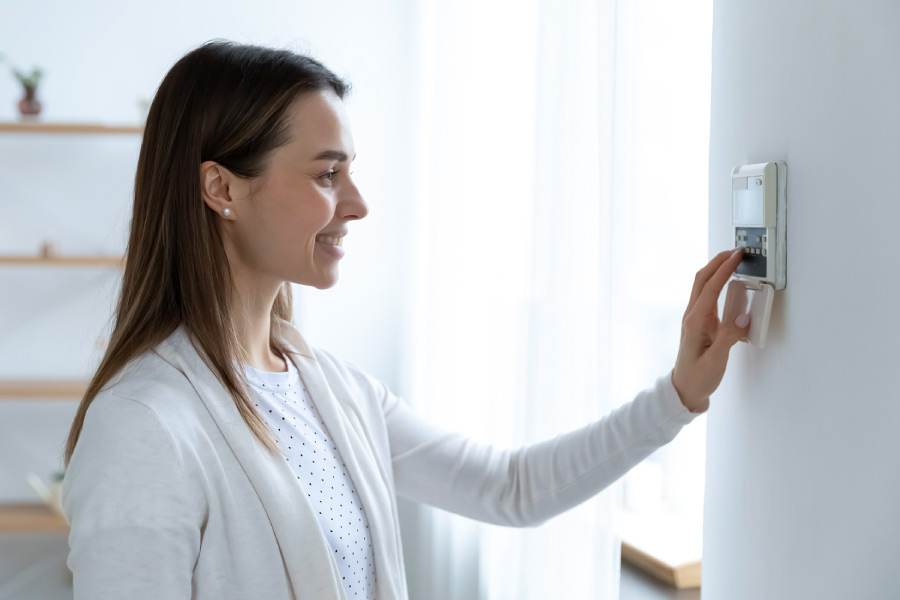Whether you’re shopping for a furnace for the first time, looking for an upgrade, or just exploring your options, it can feel overwhelming to know where to start. We’re breaking down the differences between single stage vs two stage vs variable speed furnaces to help you decide which is best for your home.
Topics
- Single Stage vs Two Stage vs Variable Speed Furnace — How Do They Work?
- Pros and Cons
- How to Choose Which is Best for You
Single Stage vs Two Stage vs Variable Speed Furnace — How Do They Work?
To understand the difference between your single stage vs two stage vs variable speed furnace options, it’s helpful to know the basics about how a furnace regulates temperature in a home.
A furnace’s capacity is measured in BTU output, otherwise known as heat output. Your furnace’s capacity is based on the coldest days in your region. If you live in a cold area, as we do here in Montana, your home will (or need) a furnace with a higher capacity. Some furnaces run only at 100% capacity—they operate at full capacity for a few minutes, then cycle off, then cycle back on again. Other furnaces can operate at different capacities, allowing them to blow air that’s “hotter” rather than “hottest.” A furnace is classified as single stage, two stage, or variable speed based on how many power levels it can run.
Pros and Cons
Single Stage Furnace
A single stage furnace is the simplest type of furnace with just two settings: on or off. That means it runs at full capacity or not at all.
Pros
A primary advantage of a single stage furnace is the lower price point. Single stage furnaces have simpler communication needs, so the cost for smart thermostats can be less.
Cons
One of the drawbacks of single stage furnaces is that when they are used to heat a large or multistory home the ambient air temperature can vary widely by floor. Because the furnace operates at full capacity for every cycle, the air temperature nearest vents warms up faster than areas further away. The challenge is the location of the thermostat in relation to the varying temperatures of the rooms throughout the house. The thermostat might “think” the entire house is at the temperature you’ve selected on your thermostat and shut down the furnace cycle too soon, leaving cold spots and even cold rooms further away from the vents.
In addition, a single stage furnace starts blowing at full blast as soon as it turns on. While it heats areas quickly overall, some air that’s not fully warmed is blown into your living spaces at the start of each heating cycle. The noise of this fan speed, particularly in a poorly-designed duct system, often can cause a need for higher TV volumes or dinner conversations. Since they only operate at one level, single stage furnaces tend to use power less efficiently—the same as if you were to only drive your car at 100mph versus cruising the highway at a gas-friendly 75mph. The START/STOP of the fan is particularly efficient.
Two Stage Furnace
Two stage furnaces, also called dual stage furnaces, have three settings: low mode, high mode, and off. Two stage furnaces typically run on low mode and kick into gear only when the weather is cold enough or it needs to create more heat to accomplish a large gap from the current temperature to the requested thermostat set point. On milder days, two stage furnaces decrease their output from 100% BTUs to a lower setting, adjusting both the amount of energy being used and the blower fan intensity. The result is that they can run longer and maintain a thermostat setting with more accuracy. They also boast improved efficiency and quieter fan heat and cool cycles.
Pros
Along with efficiency, accuracy, and quieter cycles, an added benefit of two stage furnace systems comes from the longer runtime. The longer runtime moves more air through the filter throughout the day, cleaning out allergens, dust, and other debris. What this means is that it creates more comfort in a wider range of rooms in your home.
Two stage furnaces typically cost more than single stage, but for a good reason. They can warm a larger or multistory home much more evenly, consistently, and with better cost-efficiency. A more significant investment here can significantly lower your heating bill in the long run.
Cons
Two stage furnaces are generally a solid choice for most homeowners, but they cost more than single stage. They also will require a new thermostat if you are transitioning from a single stage furnace in order to control the additional low-to-high fan options being added to your home.
Variable Speed Furnace
This is the most comfortable and efficient of the three furnace styles. Similar to two stage furnaces, variable furnaces can cycle at different capacities for the highest possible comfort level in your home.
Pros
If one stage makes a home comfortable, and two stages make it even better, multiple stages can create true luxury, with steady temperature and even heat—no cold or hot spots throughout the home, and no spikes in temperature throughout the day. Depending on the model, variable furnaces can produce heat at anywhere from 100% capacity to as low as 40%.
With a variable speed furnace, you will never be limited in your future choices for air conditioning, zoning, or air filtration. A variable speed furnace can work with a single speed air conditioner, provide year-round comfort for your home, allows for more consistent air flow throughout the home, and provides better air filtration.
Cons
The drawbacks of variable furnaces are primarily in their price point. You’ll want to make sure you choose a reputable contractor who’s able to set up the furnace controls so you reap the benefits of the furnace. We’ve often gone into homes where customers have a top-of-the-line furnace with a thermostat that was miswired or not programmed to match their variable speed furnace.
How to Choose Which is Best for You
Single stage furnaces are a good choice for budget-conscious buyers heating a small to medium-sized, single-story home. These furnaces are simple and highly reliable, heating your space with less of an upfront investment on equipment.
Two stage furnaces increase the comfort and efficiency factors, making them an excellent midrange option for larger or multistory homes. These furnaces can help decrease heating bills with more consistent ambient temperature from steady, warm airflow.
Variable speed furnaces are the highest efficiency models, heating a household with fine-tuned capabilities. These are investment pieces that deliver predictable returns when it comes to maximizing comfort and are less of an investment in the monthly costs of heating and cooling your home.
Choosing between a single stage vs two stage vs variable speed furnace will depend on your budget, the size of your home, and your desired comfort level.
If you’re still considering your best option for Bozeman furnace installation, Mountain Heating & Cooling can help. As your local HVAC experts, we understand the heating needs of homeowners in the Gallatin Valley and beyond. We specialize in Trane furnace installation and servicing, helping you take advantage of the most reliable, high-quality HVAC systems on the market. Whether you’re looking for a Trane single stage furnace, a two stage model, or a variable speed system to heat your home, we’re here to help you navigate the decision with confidence. You can depend on our friendly, respectful team with extensive HVAC training to deliver the quality service you and your family deserve.
Schedule a HVAC Consultation Today
Reach out to our team today with questions about choosing a furnace for your home, or schedule an appointment with our team. We’re here to make your home safe and comfortable year-round.

